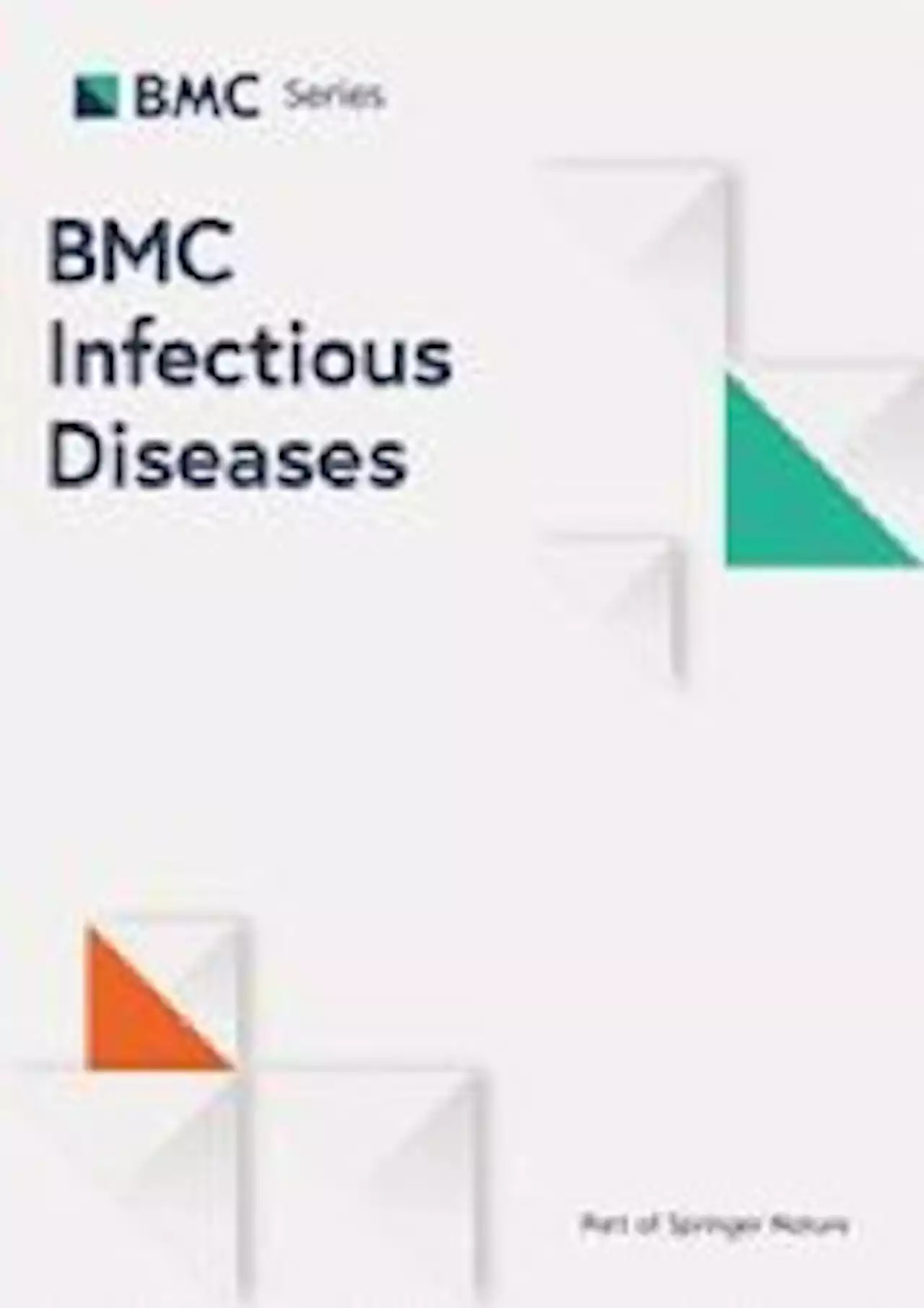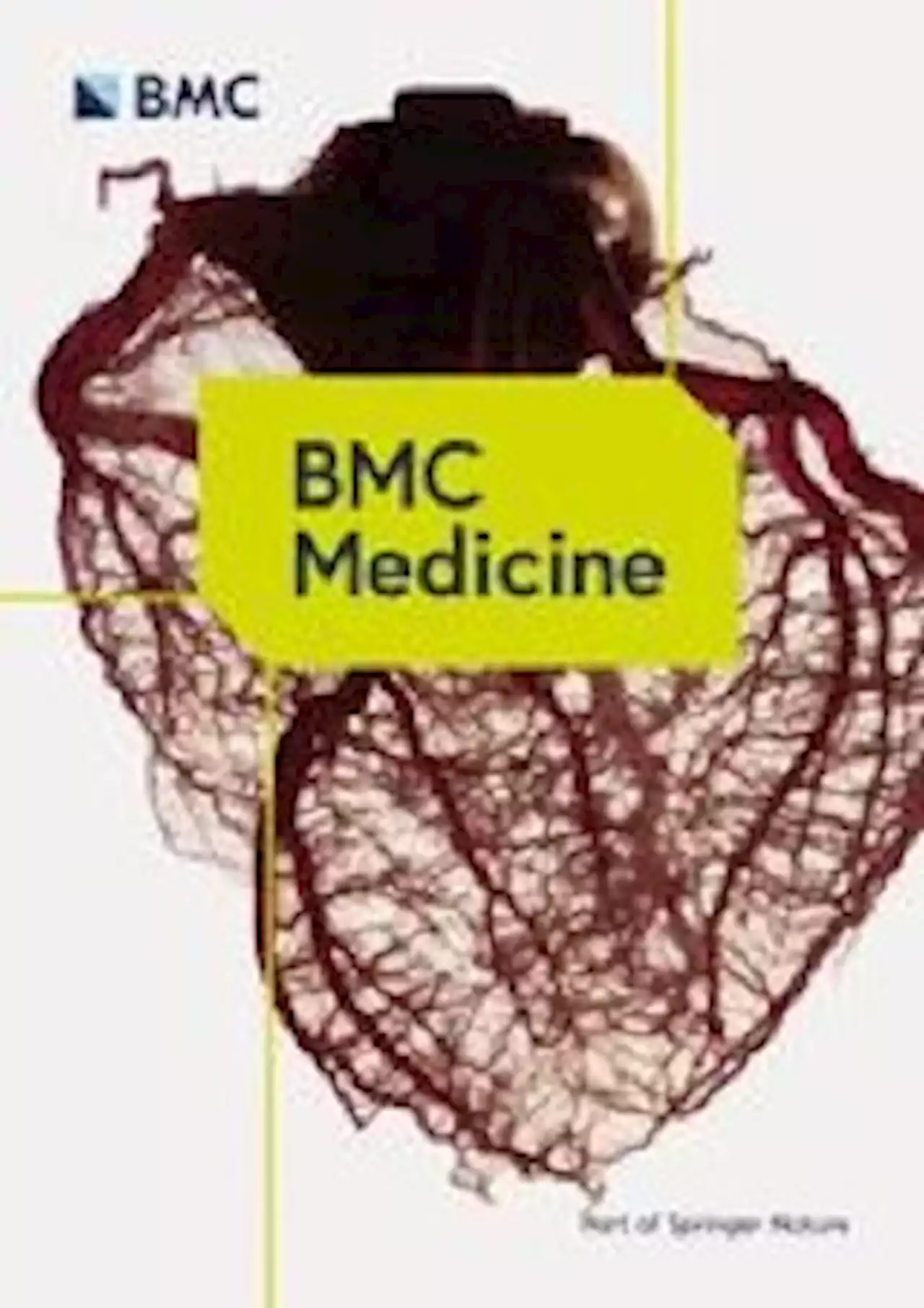Higher intake of free sugars—added sugars and those naturally present in honey and fruit juice—is associated with a higher risk of cardiovascular disease, reports a study published in BMCMedicine.
Carbohydrate intakes were expressed as a percentage of total energy intake, except for fibre which was expressed in grams per day , and each were categorised into quartiles. The baseline characteristics of participants were described by highest and lowest quartiles of total carbohydrate, free sugar, and fibre intakes.
We estimated participant survival time from age at last completed 24-h dietary assessment until age at last follow-up, first diagnosis of CVD outcome, loss to follow-up or death, whichever occurred first. The minimally adjusted model was stratified by age at recruitment and sex, and adjusted for recruitment region .
Ireland Latest News, Ireland Headlines
Similar News:You can also read news stories similar to this one that we have collected from other news sources.
 Informed or misinformed consent and use of modified texture diets in dysphagia - BMC Medical EthicsBackground Use of modified texture diets—thickening of liquids and modifying the texture of foods—in the hope of preventing aspiration, pneumonia and choking, has become central to the current management of dysphagia. The effectiveness of this intervention has been questioned. We examine requirements for a valid informed consent process for this approach and whether the need for informed consent for this treatment is always understood or applied by practitioners. Main text Valid informed consent requires provision of accurate and balanced information, and that agreement is given freely by someone who knows they have a choice. Current evidence, including surveys of practitioners and patients in different settings, suggests that practice in this area is often inadequate. This may be due to patients’ communication difficulties but also poor communication—and no real attempt to obtain consent—by practitioners before people are ‘put on’ modified texture diets. Even where discussion occurs, recommendations may be influenced by professional misconceptions about the efficacy of this treatment, which in turn may poison the well for the informed consent process. Patients cannot make appropriate decisions for themselves if the information provided is flawed and unbalanced. The voluntariness of patients’ decisions is also questionable if they are told ‘you must’, when ‘you might consider’ is more appropriate. Where the decision-making capacity of patients is in question, inappropriate judgements and recommendations may be made by substitute decision makers and courts unless based on accurate information. Conclusion Research is required to examine the informed consent processes in different settings, but there is ample reason to suggest that current practice in this area is suboptimal. Staff need to reflect on their current practice regarding use of modified texture diets with an awareness of the current evidence and through the ‘lens’ of informed consent. Education is required
Informed or misinformed consent and use of modified texture diets in dysphagia - BMC Medical EthicsBackground Use of modified texture diets—thickening of liquids and modifying the texture of foods—in the hope of preventing aspiration, pneumonia and choking, has become central to the current management of dysphagia. The effectiveness of this intervention has been questioned. We examine requirements for a valid informed consent process for this approach and whether the need for informed consent for this treatment is always understood or applied by practitioners. Main text Valid informed consent requires provision of accurate and balanced information, and that agreement is given freely by someone who knows they have a choice. Current evidence, including surveys of practitioners and patients in different settings, suggests that practice in this area is often inadequate. This may be due to patients’ communication difficulties but also poor communication—and no real attempt to obtain consent—by practitioners before people are ‘put on’ modified texture diets. Even where discussion occurs, recommendations may be influenced by professional misconceptions about the efficacy of this treatment, which in turn may poison the well for the informed consent process. Patients cannot make appropriate decisions for themselves if the information provided is flawed and unbalanced. The voluntariness of patients’ decisions is also questionable if they are told ‘you must’, when ‘you might consider’ is more appropriate. Where the decision-making capacity of patients is in question, inappropriate judgements and recommendations may be made by substitute decision makers and courts unless based on accurate information. Conclusion Research is required to examine the informed consent processes in different settings, but there is ample reason to suggest that current practice in this area is suboptimal. Staff need to reflect on their current practice regarding use of modified texture diets with an awareness of the current evidence and through the ‘lens’ of informed consent. Education is required
Read more »
 On the effectiveness of COVID-19 restrictions and lockdowns: Pan metron ariston - BMC Public HealthBackground Early evaluations of the effectiveness of non-pharmaceutical intervention (NPI) mandates were constrained by the lack of empirical data, thereby also limiting model sophistication (e.g., models did not take into account the endogeneity of key variables). Methods Observational analysis using a behavioral four-equation structural model that accounts for the endogeneity of many variables and correlated unobservable country characteristics. The dataset includes information from 132 countries from February 15, 2020, to April 14, 2021, with data on confirmed cases and deaths, mobility, vaccination and testing rates, and NPI stringency. The main outcomes of interest are the growth rates of confirmed cases and deaths. Results There were strongly decreasing returns to more stringent NPI mandates. No additional impact was found for NPI mandates beyond a Stringency Index range of 51–60 for cases and 41–50 for deaths. A nonrestrictive policy of extensive and open testing constituted 51% [27% to 76%] of the impact on pandemic dynamics of the optimal NPIs. Reductions in mobility were found to increase, not decrease, both case $$\left( -0.0417,\left[ -0.0578,-0.0256\right] ,p|0.001\right)$$ - 0.0417 , - 0.0578 , - 0.0256 , p | 0.001 and death growth rates $$\left( -0.0162,\left[ -0.03,-0.002\right] ,p=0.025\right)$$ - 0.0162 , - 0.03 , - 0.002 , p=0.025 . More stringent restrictions on gatherings and international movement were found to be effective. Governments conditioned policy choices on recent pandemic dynamics, and were found to be more hesitant in de-escalating NPIs than they were in imposing them. Conclusion At least 90% of the maximum effectiveness of NPI mandates is attainable with interventions associated with a Stringency Index in the range of 31–40, which impose minimal negative social externalities. This was significantly less than the average stringency level of implemented policies around the world during the same time period.
On the effectiveness of COVID-19 restrictions and lockdowns: Pan metron ariston - BMC Public HealthBackground Early evaluations of the effectiveness of non-pharmaceutical intervention (NPI) mandates were constrained by the lack of empirical data, thereby also limiting model sophistication (e.g., models did not take into account the endogeneity of key variables). Methods Observational analysis using a behavioral four-equation structural model that accounts for the endogeneity of many variables and correlated unobservable country characteristics. The dataset includes information from 132 countries from February 15, 2020, to April 14, 2021, with data on confirmed cases and deaths, mobility, vaccination and testing rates, and NPI stringency. The main outcomes of interest are the growth rates of confirmed cases and deaths. Results There were strongly decreasing returns to more stringent NPI mandates. No additional impact was found for NPI mandates beyond a Stringency Index range of 51–60 for cases and 41–50 for deaths. A nonrestrictive policy of extensive and open testing constituted 51% [27% to 76%] of the impact on pandemic dynamics of the optimal NPIs. Reductions in mobility were found to increase, not decrease, both case $$\left( -0.0417,\left[ -0.0578,-0.0256\right] ,p|0.001\right)$$ - 0.0417 , - 0.0578 , - 0.0256 , p | 0.001 and death growth rates $$\left( -0.0162,\left[ -0.03,-0.002\right] ,p=0.025\right)$$ - 0.0162 , - 0.03 , - 0.002 , p=0.025 . More stringent restrictions on gatherings and international movement were found to be effective. Governments conditioned policy choices on recent pandemic dynamics, and were found to be more hesitant in de-escalating NPIs than they were in imposing them. Conclusion At least 90% of the maximum effectiveness of NPI mandates is attainable with interventions associated with a Stringency Index in the range of 31–40, which impose minimal negative social externalities. This was significantly less than the average stringency level of implemented policies around the world during the same time period.
Read more »
 Malaria and the incidence of COVID-19 in Africa: an ecological study - BMC Infectious DiseasesBackground It has been shown that stimulation of innate immunity may provide temporary protection against a variety of infectious diseases. Malaria has been shown to induce a robust innate immune response. This study was conducted to test the hypothesis that if the cumulative number of cases diagnosed with COVID-19 per 100,000 population was correlated with the prevalence of malaria in African countries where both malaria and COVID-19 were prevalent. Methods In this ecological study, the cumulative incidence of COVID-19 and the prevalence of malaria were compared in 53 African countries. A negative binomial regression analysis with the cumulative incidence of COVID-19 as the dependent variable, and the human development index (HDI) and the prevalence of malaria, as independent variables, were used. Results The mean cumulative incidence of COVID-19 was 522 cases per 100,000. Each 0.1 unit increase in HDI was associated with 2.4-fold (95% confidence interval 1.8–3.1) increase in the cumulative incidence of COVID-19. Prevalence of malaria was also independently associated with the cumulative incidence; each 10% increase in the prevalence was associated with 28% (10–41%) decrease in the cumulative incidence of COVID-19. Conclusions Malaria might protect people against SARS-CoV-2 through the stimulation of innate immunity. Stimulation of the innate immune system could be the first line of defense in the pandemic preparedness arsenal.
Malaria and the incidence of COVID-19 in Africa: an ecological study - BMC Infectious DiseasesBackground It has been shown that stimulation of innate immunity may provide temporary protection against a variety of infectious diseases. Malaria has been shown to induce a robust innate immune response. This study was conducted to test the hypothesis that if the cumulative number of cases diagnosed with COVID-19 per 100,000 population was correlated with the prevalence of malaria in African countries where both malaria and COVID-19 were prevalent. Methods In this ecological study, the cumulative incidence of COVID-19 and the prevalence of malaria were compared in 53 African countries. A negative binomial regression analysis with the cumulative incidence of COVID-19 as the dependent variable, and the human development index (HDI) and the prevalence of malaria, as independent variables, were used. Results The mean cumulative incidence of COVID-19 was 522 cases per 100,000. Each 0.1 unit increase in HDI was associated with 2.4-fold (95% confidence interval 1.8–3.1) increase in the cumulative incidence of COVID-19. Prevalence of malaria was also independently associated with the cumulative incidence; each 10% increase in the prevalence was associated with 28% (10–41%) decrease in the cumulative incidence of COVID-19. Conclusions Malaria might protect people against SARS-CoV-2 through the stimulation of innate immunity. Stimulation of the innate immune system could be the first line of defense in the pandemic preparedness arsenal.
Read more »
 New balance capability index as a screening tool for mild cognitive impairment - BMC GeriatricsBackground Mild cognitive impairment (MCI) is not just a prodrome to dementia, but a very important intervention point to prevent dementia caused by Alzheimer's disease (AD). It has long been known that people with AD have a higher frequency of falls with some gait instability. Recent evidence suggests that vestibular impairment is disproportionately prevalent among individuals with MCI and dementia due to AD. Therefore, we hypothesized that the measurement of balance capability is helpful to identify individuals with MCI. Methods First, we developed a useful method to evaluate balance capability as well as vestibular function using Nintendo Wii balance board as a stabilometer and foam rubber on it. Then, 49 healthy volunteers aged from 56 to 75 with no clinically apparent cognitive impairment were recruited and the association between their balance capability and cognitive function was examined. Cognitive functions were assessed by MoCA, MMSE, CDR, and TMT-A and -B tests. Results The new balance capability indicator, termed visual dependency index of postural stability (VPS), was highly associated with cognitive impairment assessed by MoCA, and the area under the receiver operating characteristic (ROC) curve was more than 0.8, demonstrating high sensitivity and specificity (app. 80% and 60%, respectively). Conclusions Early evidence suggests that VPS measured using Nintendo Wii balance board as a stabilometer helps identify individuals with MCI at an early and preclinical stage with high sensitivity, establishing a useful method to screen MCI.
New balance capability index as a screening tool for mild cognitive impairment - BMC GeriatricsBackground Mild cognitive impairment (MCI) is not just a prodrome to dementia, but a very important intervention point to prevent dementia caused by Alzheimer's disease (AD). It has long been known that people with AD have a higher frequency of falls with some gait instability. Recent evidence suggests that vestibular impairment is disproportionately prevalent among individuals with MCI and dementia due to AD. Therefore, we hypothesized that the measurement of balance capability is helpful to identify individuals with MCI. Methods First, we developed a useful method to evaluate balance capability as well as vestibular function using Nintendo Wii balance board as a stabilometer and foam rubber on it. Then, 49 healthy volunteers aged from 56 to 75 with no clinically apparent cognitive impairment were recruited and the association between their balance capability and cognitive function was examined. Cognitive functions were assessed by MoCA, MMSE, CDR, and TMT-A and -B tests. Results The new balance capability indicator, termed visual dependency index of postural stability (VPS), was highly associated with cognitive impairment assessed by MoCA, and the area under the receiver operating characteristic (ROC) curve was more than 0.8, demonstrating high sensitivity and specificity (app. 80% and 60%, respectively). Conclusions Early evidence suggests that VPS measured using Nintendo Wii balance board as a stabilometer helps identify individuals with MCI at an early and preclinical stage with high sensitivity, establishing a useful method to screen MCI.
Read more »
 Associations of genetic and infectious risk factors with coronary heart diseaseIn a prospective, population-based cohort, high polygenic risk and infection with Fusobacterium nucleatum have a small, yet independent impact on coronary heart disease risk.
Associations of genetic and infectious risk factors with coronary heart diseaseIn a prospective, population-based cohort, high polygenic risk and infection with Fusobacterium nucleatum have a small, yet independent impact on coronary heart disease risk.
Read more »
 The association between cannabis use and sleep complaints in University studentsThe association between cannabis use and sleep complaints in University students univbordeaux CHUBordeaux univ_paris_cite cannabis sleep student health insomnia
The association between cannabis use and sleep complaints in University studentsThe association between cannabis use and sleep complaints in University students univbordeaux CHUBordeaux univ_paris_cite cannabis sleep student health insomnia
Read more »
